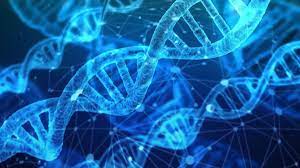New eDNA Sequencing Method To Assess Biodiversity:

Researchers from the Laboratory for the Conservation of Endangered Species (LaCONES) at the CSIR-Centre for Cellular and Molecular Biology (CCMB) in Hyderabad have developed a new eDNA sequencing method to assess biodiversity.
- Environmental DNA is DNA shed by all organisms into their surroundings through natural processes during their lifetime or after death.
- It originates from cellular material shed by organisms (via the skin, excrement, etc.) into aquatic or terrestrial environments that can be sampled and monitored using new molecular methods.
- The new non-invasive method can assess the total biodiversity of any ecosystem by sequencing the DNA fragments found in environmental samples such as water, soil, or air.
- This method can detect all kinds of organisms, including viruses, bacteria, archaea, and eukaryotes such as fungi, plants, insects, birds, fish and other animals.
- This method requires just a few litres of water sample without any direct capture or counting of species.
- The researchers filter out eDNA from environmental samples, read their sequences, and thus identify the source of the eDNA.




